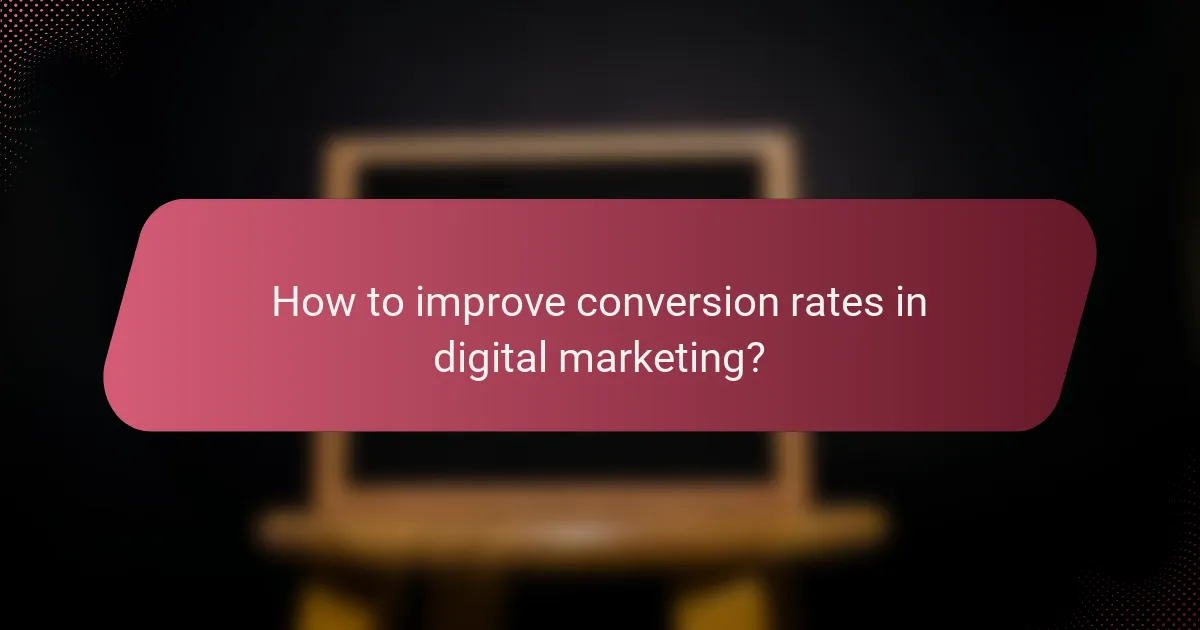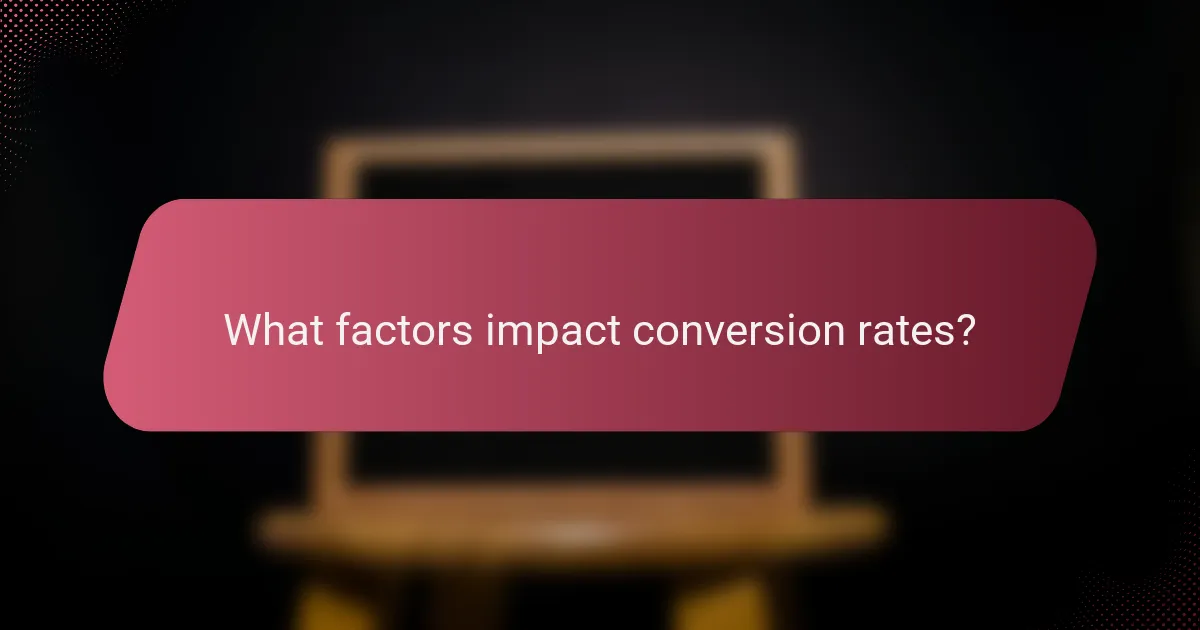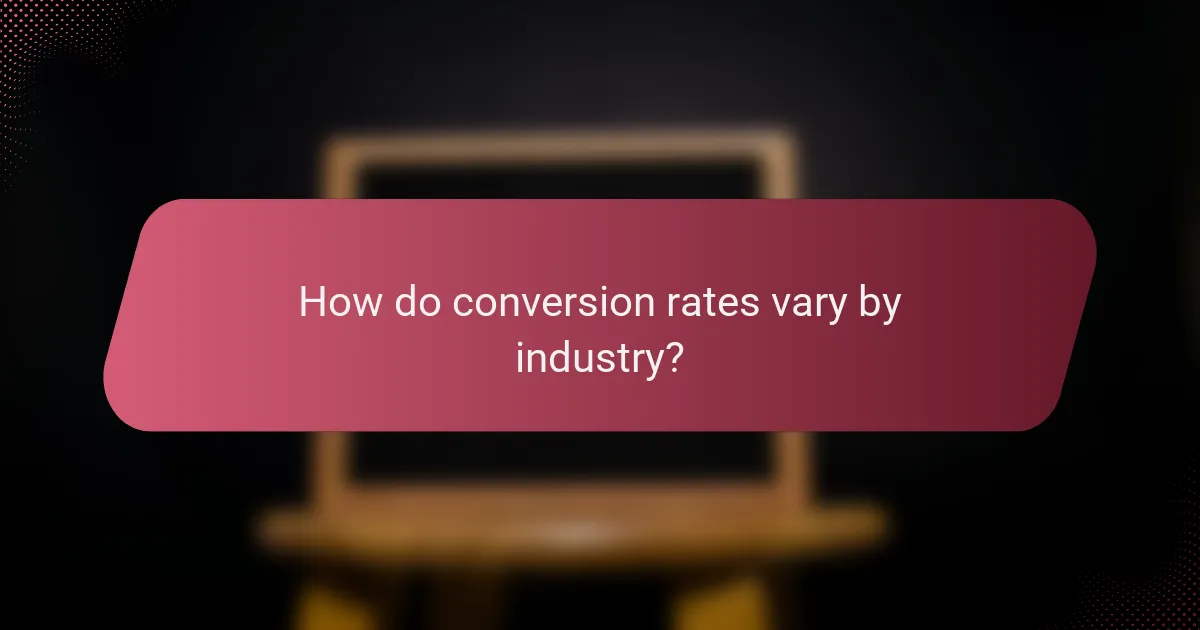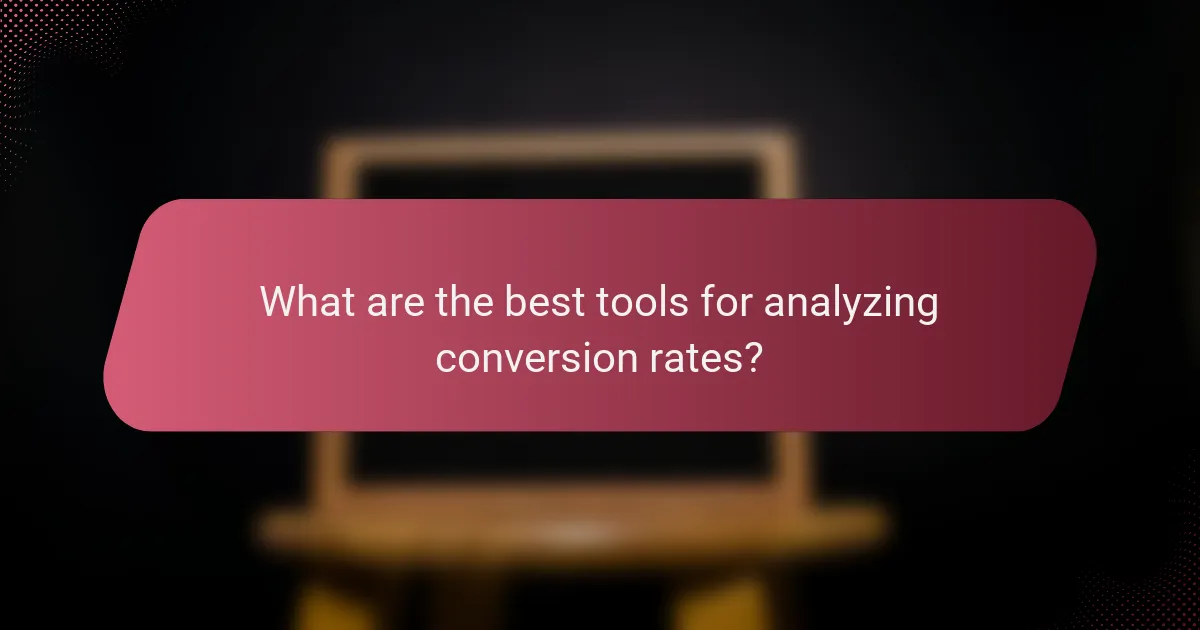Conversion rates are a critical metric in digital marketing, reflecting the effectiveness of a website in turning visitors into customers. By optimizing various elements such as website design, call-to-action strategies, and content quality, businesses can significantly enhance their conversion performance. Utilizing analytics to understand user behavior further empowers companies to make data-driven decisions for continuous improvement.

How to improve conversion rates in digital marketing?
Improving conversion rates in digital marketing involves optimizing various aspects of your online presence to encourage visitors to take desired actions. Key strategies include A/B testing, enhancing landing pages, and utilizing persuasive copywriting.
Implement A/B testing
A/B testing allows you to compare two versions of a webpage or ad to determine which one performs better. By changing one element at a time, such as headlines or call-to-action buttons, you can gather data on user preferences and behaviors.
Start with a hypothesis about what might improve conversions, then create two variations to test. Monitor metrics like click-through rates and conversion rates over a set period to identify the winning version.
Optimize landing pages
Landing pages should be tailored to specific campaigns or offers to maximize conversions. Ensure that the messaging aligns with the ad or link that brought the visitor there, providing a seamless experience.
Focus on clear headlines, concise content, and strong calls to action. Consider using bullet points for easy readability and including visuals that support your message.
Utilize persuasive copywriting
Persuasive copywriting is essential for engaging visitors and encouraging them to act. Use emotional triggers and compelling language to highlight benefits rather than just features.
Incorporate storytelling techniques to make your message relatable. Use phrases that create urgency, such as “limited time offer” or “only a few left in stock,” to prompt immediate action.
Enhance user experience
A positive user experience is crucial for improving conversion rates. Ensure that your website is easy to navigate, loads quickly, and is mobile-friendly, as a significant portion of users access websites via smartphones.
Regularly test your site’s functionality and gather user feedback to identify pain points. Simple adjustments, like reducing the number of form fields or improving site speed, can lead to higher conversion rates.
Leverage social proof
Social proof, such as customer reviews and testimonials, can significantly influence potential buyers’ decisions. Displaying positive feedback prominently can build trust and credibility for your brand.
Consider incorporating case studies or user-generated content to showcase real-life success stories. Highlighting statistics, like “over 10,000 satisfied customers,” can also enhance your credibility and encourage conversions.

What factors impact conversion rates?
Conversion rates are influenced by various factors, including website design, audience alignment, call-to-action effectiveness, and the quality of traffic sources. Understanding these elements can help businesses optimize their strategies to improve conversions.
Website design and usability
A well-designed website enhances user experience, which can significantly boost conversion rates. Key aspects include intuitive navigation, mobile responsiveness, and fast loading times. Aim for a clean layout that guides visitors toward desired actions without distractions.
Consider conducting usability tests to identify pain points in the user journey. Tools like heatmaps can reveal where users click most often, helping you refine your design for better engagement.
Target audience alignment
Aligning your offerings with the needs and preferences of your target audience is crucial for improving conversion rates. Conduct market research to understand your audience’s demographics, interests, and pain points. Tailoring your messaging and product features to resonate with them can lead to higher engagement.
Utilize customer personas to guide your marketing efforts. By addressing specific needs and preferences, you can create more relevant content that encourages visitors to convert.
Call-to-action effectiveness
The effectiveness of your call-to-action (CTA) can make or break your conversion rates. Ensure your CTAs are clear, compelling, and strategically placed within your content. Use action-oriented language that creates a sense of urgency, such as “Get Started Now” or “Limited Time Offer.”
Experiment with different colors, sizes, and placements for your CTAs. A/B testing can help you determine which variations yield the best results, allowing for continuous improvement.
Traffic source quality
The quality of traffic sources greatly impacts conversion rates. Organic traffic from search engines often converts better than paid ads, as users are typically more engaged and interested. Focus on attracting high-quality traffic through SEO, content marketing, and social media strategies.
Analyze your traffic sources regularly to identify which channels yield the highest conversions. Adjust your marketing efforts to prioritize these sources, ensuring that your resources are allocated effectively for maximum impact.

What is the role of analytics in conversion rate optimization?
Analytics plays a crucial role in conversion rate optimization (CRO) by providing insights into user behavior and performance metrics. By analyzing data, businesses can identify areas for improvement and make informed decisions to enhance their conversion rates.
Identifying user behavior patterns
Understanding user behavior patterns is essential for effective CRO. Analytics tools can track how users interact with a website, revealing trends such as common navigation paths, time spent on pages, and exit points. This information helps businesses tailor their content and design to better meet user needs.
For example, if analytics show that users frequently abandon their shopping carts at a specific step, businesses can investigate that step further to identify potential obstacles, such as confusing forms or unexpected costs. Addressing these issues can lead to higher conversion rates.
Measuring key performance indicators
Measuring key performance indicators (KPIs) is vital for assessing the effectiveness of CRO strategies. Common KPIs include conversion rate, bounce rate, and average order value. By regularly monitoring these metrics, businesses can gauge the impact of changes made to their websites.
Setting benchmarks for these KPIs allows for easier comparison over time. For instance, if a website’s conversion rate is currently around 2%, aiming for a 3% target can help focus optimization efforts and evaluate success.
Tracking conversion funnels
Tracking conversion funnels provides a visual representation of the steps users take before completing a desired action, such as making a purchase. By analyzing each stage of the funnel, businesses can identify where users drop off and optimize those specific areas.
For instance, if a significant number of users leave after viewing the product page, it may indicate that the page lacks compelling content or clear calls to action. Improving these elements can help guide users through the funnel and increase overall conversions.

How do conversion rates vary by industry?
Conversion rates differ significantly across industries due to varying customer behaviors, sales processes, and market dynamics. Understanding these differences can help businesses set realistic goals and optimize their strategies accordingly.
E-commerce conversion rates
E-commerce conversion rates typically range from 1% to 3%, though high-performing sites can achieve rates above 5%. Factors influencing these rates include website design, product pricing, and customer trust. For instance, offering free shipping or easy returns can significantly boost conversions.
To improve e-commerce conversion rates, businesses should focus on user experience, clear calls to action, and effective marketing strategies. A/B testing different elements on the site can provide insights into what resonates best with customers.
B2B service conversion rates
B2B service conversion rates are generally lower, often falling between 0.5% and 2%. This is due to longer sales cycles and the need for more extensive relationship building. Key factors include the quality of leads, the complexity of the service, and the effectiveness of the sales team.
To enhance B2B conversion rates, companies should prioritize lead nurturing and personalized communication. Providing valuable content, such as whitepapers or case studies, can help establish authority and trust with potential clients.
Non-profit conversion rates
Non-profit conversion rates can vary widely, often ranging from 1% to 10% depending on the campaign and audience. Factors such as emotional appeal, clarity of the mission, and ease of donation play critical roles. Seasonal campaigns, like year-end giving, can lead to spikes in conversion rates.
To increase conversion rates for non-profits, organizations should craft compelling narratives that resonate with potential donors. Utilizing social proof, like testimonials or success stories, can also enhance credibility and encourage contributions.

What are the best tools for analyzing conversion rates?
Several tools excel at analyzing conversion rates, each offering unique features to help businesses optimize their performance. Key options include Google Analytics, Hotjar, and Optimizely, which provide insights into user behavior and conversion metrics.
Google Analytics
Google Analytics is a powerful tool for tracking website traffic and user interactions, making it essential for conversion rate analysis. It allows users to set up goals and funnels, enabling the measurement of specific actions, such as purchases or sign-ups.
To effectively use Google Analytics for conversion analysis, ensure you define clear goals that align with your business objectives. Regularly review the conversion rates across different traffic sources to identify which channels yield the best results.
Hotjar
Hotjar focuses on understanding user behavior through heatmaps and session recordings, providing visual insights into how visitors interact with your site. This can help identify areas where users drop off, allowing for targeted improvements to enhance conversion rates.
Utilizing Hotjar’s feedback tools, such as surveys and polls, can also provide qualitative data on user experiences. Combining this information with quantitative metrics from other tools can create a comprehensive view of conversion performance.
Optimizely
Optimizely is primarily known for its A/B testing capabilities, enabling businesses to experiment with different versions of web pages to determine which performs better in terms of conversion rates. This tool allows for data-driven decisions based on real user interactions.
When using Optimizely, focus on testing one variable at a time to accurately assess its impact on conversions. Additionally, ensure that you have a sufficient sample size to achieve statistically significant results, which will help in making informed adjustments to your site.
